About the Author
The writer became an Orthodox Christian in 1963, though he had been worshipping in Orthodox churches for some time before that. He was received into what was then the Richmond and Great Britain diocese of ROCOR, and his godfather was Timothy Ware, now Metropolitan Kallistos of Diokleia. Mr. Harwood is a retired lecturer and librarian and is now a Church Reader and helps at the Sourozh Episcopal Metochion at Bodiam in Sussex, England.
The article which follows is in no way a complete or academic study, just my personal memories offered in the hope that they might be of interest to readers of Sourozh and as an illustration of the enormous changes which have taken place in Orthodox Church life since 1960.
I can conveniently begin with this year because it was the one in which the Grand Duchess Xenia Alexandrovna, sister of the Blessed Tsar-Martyr Nicholas, died and her funeral Liturgy was the first Orthodox service I ever attended. I had a teenage interest in the Russian Imperial House but the sight of Archbishop (now Saint) John Maximovich and many other clergy serving the funeral service was an absolute revelation to me, more valuable than many books about the Orthodox Church. It was also, of course, the end of an era – though I did not grasp this – and many famous Russians of the emigration were due soon to follow the Grand Duchess to the grave. For the last time, the Russian church in London hosted not only many members of the Imperial Family but representatives of the Queen and also of the Yugoslav and other European Royal families. There was nowhere to place all the flowers which had been sent and the whole atmosphere was more like Pascha than an event of mourning. Indeed I discovered later that as the services took place in the week after Thomas Sunday, they reflected some of the joy of the Festival.
But what was the condition of Orthodoxy in London and the rest of Britain in that year? Two years later, in 1962, the Orthodox Youth Association published for the first time a complete list of Orthodox parishes and clergy in this country. We can look at this list in detail for it is only eight pages long! It illustrates vividly the changes which have taken place in half a century.
Then, as now, the Greek Archdiocese of Thyateira was the largest Orthodox jurisdiction but whereas it now has parishes in every major British city, in 1962 it possessed just three churches in London [1]The 2010 Directory of Orthodox Parishes and Clergy in Britain and Ireland lists 24 parishes in London ] and six in the provinces, several of which had been founded in the nineteenth century and built as Orthodox churches – the use of redundant Anglican churches was unheard of in those days. Second in size was the Russian Orthodox Church Abroad, organised as a vicariate whose bishop held the title “of Richmond” (formerly “of Preston”) with a cathedral and convent in London and four parishes with resident clergy in the provinces. The Serbian Church had four churches, one of which was in London, and the Russian Orthodox Church (Moscow Patriarchate) two – London and Oxford – though at that time the recently established monastery at Tolleshunt Knights in Essex was also within the Patriarchate of Moscow. Finally there was a jurisdiction which no longer exists, the “Polish Orthodox Church Abroad”, with a bishop [2]Bishop Matthew of Wilno, now, following boundary changes, Vilnius, Lithuania – who lived 1894-1985. His clergy were mostly military chaplains who originally served the Polish soldiers and airmen in … Continue reading and five parishes. It had no London church building. This Polish Church was a legal entity recognised by the Polish Government in Exile and comprising emigrants of the Second World War – from the old Poland whose pre-war borders had stretched nearly as far east as Minsk – Ukrainians, Belarussians and Russians, people from exactly the same background as those who attended the Russian Church Abroad parishes in the midlands and north of England. And that was all. Only two priests resided in Scotland and none at all in Ireland. Many Orthodox considered it quite normal to travel to and attend the Paschal night service once a year and then go nowhere at all until the following Easter.
But what of the clergy and people who formed the flesh on these statistical bones? I frequently attended the churches of all the dioceses mentioned above but my most vivid memories are still those of the London cathedral of the Russian Church Abroad, where of course Xenia Alexandrovna’s funeral took place.
In 1960 the Church Abroad in the United Kingdom was headed by Bishop Nikodem, though the UK was actually in the West European Diocese under the supreme authority of the famous Archbishop John (Maximovich.) Bishop Nikodem’s secular name had been Nikolai Vasilievich Nagaieff and he had once been a General. As a young officer he had been part of the Infantry Guard Batalion at Tsarskoye Selo and knew the Emperor quite well. He once told me that he also often attended the amazing Liturgies served by Saint John of Kronstadt at St Andrew’s cathedral there. Nikolai Vasilievich was much decorated for his service in the First World War and during the Russian Civil War he was on the General Staff of Baron Wrangel in southern Russia. Here he attained his rank of General. He lived between the wars in Yugoslavia, like many Russians who had fought in the Civil War, and after the death of his wife he took monastic vows and was known by all for the quiet and hidden asceticism of his life. He was consecrated bishop and appointed to the British Diocese in 1954. Born in 1883, he did not die until 1976, still an active bishop, serving almost to the end a full Hierarchical Liturgy at his cathedral every Sunday with great dignity and prayerfulness.
Serving with him at the cathedral [3]A former protestant chapel in Emperor’s Gate, SW7, a rather unattractive building, though beautifully furnished inside. was the widely revered Archpriest George Cheremetieff (he always used this transliteration of his celebrated name). As one of the richest men in Russia the young Count had left his earthly homeland at the revolution with a few possessions packed in one suitcase. Throughout his subsequent life, on each anniversary of this event, he would see whether his clothes and books still fitted the case. Anything surplus he then discarded. Father George was extremely well known as a man of prayer and as a spiritual father, even to those outside the Church. His advice was always fresh and striking. He was my spiritual father at that time and I can remember many of his words. Once he said to me, “Never let the words of the Gospels become stale to you through over-familiarity; if you find this happens, try to use the original Greek text or, if that is too difficult, read a version in a language you don’t know very well, and read it slowly.” Father George, who was born in St Petersburg in 1887, served all through the First World War as a Cavalry Officer and then again in the Civil War. He finally settled in Paris but during the Second World War was commandeered by the Germans as an interpreter on the Eastern Front (he knew five languages perfectly). This was a terrible experience for him and the only time I ever heard him talk in detail about it was to correct the official Soviet account of the mining of the Uspensky Sobor of the Kiev Caves Lavra. He had actually witnessed how the most venerable of Russia’s cathedrals had been destroyed and who was responsible.
During his time in England, Father George lived in a tiny basement room in central London where he would receive his spiritual children and other visitors with great warmth and cheerfulness. He served the Liturgy for the last time on the Sunday of Orthodoxy 1971, at his beloved Annunciation Convent. On Mid-Pentecost of the same year he died.
Another priest serving with Bishop Nikodem in 1960 was Archimandrite Amvrossii [4]He actually always used the form Ambrosius. Pogodin of the famous family of Russian historians. This brilliant man, born in exile in Yugoslavia in 1925, deserves to be better remembered. He lived in England between 1953 and 1964 and it was here that he wrote his doctoral thesis, for the St Serge Institute in Paris, On Saint Mark of Ephesus and the Florentine Union. This was afterwards published in Russian at Jordanville but it still badly needs an English translation. It takes a firmly Orthodox yet balanced and non-fanatical line on the problem of Orthodox- Roman Catholic relations, not only at the Council of Florence but also today. He also translated a number of important patristic and liturgical texts from Greek into Russian, for example the Slavonic service to Saint Augustine of Hippo is his. It is noteworthy that Father Ambrosius left London to take charge of the Russian Church Abroad parish in Rome and was an official Orthodox observer at the First Session of the Second Vatican Council. He died in USA in 2004 after a long priestly service in parishes of the Orthodox Church of America.
Something must be said of the Russian Orthodox Convent of the Annunciation which I have already mentioned in connection with Father George. This was established by Abbess Elizabeth (Ampenoff) in 1954. The Ampenoff family had lived in London between the two Wars but in 1940 Mother Elizabeth had gone to Palestine (then under British control) to become a nun. In 1945 she became Abbess of the famous Ein Karim (Gornee) Convent at the birthplace of Saint John the Baptist. Most of the nuns of this and the other Russian convents in the Holy Land, were Palestinian Arabs. During the hostilities leading to the establishment of the State of Israel the Convent was taken away from the Russian Church Abroad (towards which the Israelis were very hostile) and Mother Elizabeth with five young novices began a life of wandering until Archbishop John Maximovich blessed them to establish a convent in London dedicated to the Annunciation. At that time none of the nuns had visas except the Abbess herself. All turned out well and in 1959, not only was the Cathedral at Emperor’s Gate formally blessed and opened but Mother Elizabeth and the sisters moved into their new and final home, a large detached Edwardian house in Willesden Green with room enough to house them all and to establish a intimate and beautiful chapel. There regular monastic services were served from the beginning and the convent acquired its own priest, Father John Sawicz, formerly of the Polish Orthodox Church Abroad. Although not in good health he had an impressive appearance and voice, and I can well remember his Liturgies in which he wore the beautiful vestments the sisters had made.
Since that time, both Abbess Elizabeth and her faithful assistant, Mother Seraphima, have both died but the Convent still exists, though very sadly its position is now an uncanonical one as the remaining nuns did not feel able to accept the restoration of Communion between the Russian Orthodox church and the Russian Church Abroad which took place in Moscow on Ascension Day 2007.
For many years the nuns gave children Religious Instruction as well as lessons in Russian and Church reading and singing. The funerals of Mother Elizabeth (1908-1999) and Mother Seraphima (d. 2000) were crowded with mourners who as children had been taught at the convent.
Two other events took place in the life of the Russian Church Abroad in the early 1960s. The first, which I vividly remember, was the final Liturgy served, very solemnly, in London by Archbishop John (Maximovich). This was on August 28th 1962, the Feast of the Dormition and the dedication of the church at Emperor’s Gate. The Saint had just been appointed Archbishop of San Francisco and there was a general feeling that we would not see him again in this world. I can vividly remember the occasion, the Saint was a short frail figure with dishevelled hair and beard yet with an electrifying presence. At this Liturgy he was wearing new and beautiful dark blue vestments and all eyes were on him. Soon afterwards he left for America and died not long afterwards, in Seattle in 1966.
The second was a happier occasion, the visit in 1965 of the miraculous “Kursk-Root” Icon of the Mother of God – the protector of the Russian Emigration – accompanied by Metropolitan Philaret, who had just been elected Head of the Russian Orthodox Church Abroad in succession to the aged Metropolitan Anastassy. [5]Metropolitan Anastssy had been consecrated bishop in 1906 (!) and had been the chief supporter of the Martyr Grand-Duchess Elizabeth in her struggle to obtain Synodal approval for the Rule she wanted … Continue reading The visit of the Metropolitan and the Icon to London was widely reported and attended by large numbers of Orthodox of different nationalities as well as clergy from all over Britain. One of these was Kallistos Ware who had just been ordained as a deacon in the Greek Archdiocese. Now Metropolitan Kallistos, he is widely known as a prolific writer and speaker on all aspects of the Orthodox Church.
Nothing has been said so far about the ordinary parishioners at Emperor’s Gate, nor those of the recently-acquired church of the Russian Orthodox Church of the Moscow Patriarchate at Ennismore Gardens. They came of course from similar backgrounds. The division of the old Dormition parish in London dated from 1926 when some followed Metropolitan Evlogy in Paris (who a little later put himself under the Patriarchate of Constantinople) whilst a slightly larger group remained with Metropolitan Anthony (Khrapovitsky) and the Russian Church Abroad. After the Second World War the former “Evlogians” submitted to the Patriarchate of Moscow. However, both groups of these “First Emigration” Russians and their children came from the minor nobility, military and naval families, civil servants, engineers and technicians who had been advisers on the Western Front during the First World War. An number were Russians whose ancestors had originally come from Britain and who often retained their Anlgo-Saxon names. One Russian Church Reader, fiercely patriotic and speaking English very poorly, was actually named Welsh-Walshe. In the 1920s, for some bureaucratic reason, this group were given priority in applications for residence permits over other Russians who spoke perfect English but had obviously foreign names.
There is no space to describe in any detail those members of the old emigration. I mention only one in passing because he is now quite forgotten, Baron George Knupffer. He was perhaps the most active person in émigré politics, founding the Monarchist Press Association (which I think still exists) and various other monarchist and conservative groups, both Russian and English. He was also what would now be called the public relations representative of the Imperial Heir, Grand-Duke Vladimir Kirillovich, whose claims and manifestos he did much to make known. His major book, The Struggle for World Power, attacking both capitalism and Soviet communism, is still much sought after from internet book sellers.
Many Russian Orthodox however, were not of the old emigration but had come to Britain in the wave of upheavals in Eastern Europe at the end of the Second World War. These actually outnumbered the old émigrés, though they were in decline in the 1960s as many moved to the Americas, and most lived in the industrial Midlands and North rather than in London. Almost all of this group adhered to the Russian Church Abroad (whose clergy in Germany had often helped them to come to Britain) or to the already-mentioned Polish Orthodox Church. They were largely of peasant origin and a surprisingly large number came from the Kiev region. Despite the best efforts of the Russian Church Abroad, some were lost to various uncanonical Ukrainian and Belarussian “churches” which although politically active had very few clergy to organize proper church life for the exiles. There were also at that time tiny groups of Orthodox Estonians, Latvians and Ukrainians with their clergy (one for each group). These had no church buildings but, though technically under Constantinople, they usually used the cathedral and convent of ROCA.
Some idea of the atmosphere of Second-emigration life can be gained from the story told me by the one priest of the “Costantinopolitan” Ukrainians who had refused to join the “Autocephalists” in England. He kept hidden all information regarding his address and details of where he held services “for fear of assassination” by the extreme nationalists. Nor was this paranoia on his part, as several bishops and clergy had been killed at the end of the War by such people for “pro-Russian activities” i.e. wanting to remain in canonical Orthodoxy. [6]Metropolitan Alexis Gromadskii of Kiev was assassinated in 1943, as were several bishops and clergy of the Ukrainian Autonomous Church by Banderists and other supporters of the rival Autocephalist … Continue reading
Much has been written about the then Bishop Anthony of Sergievo, later Metropolitan Anthony of Sourozh, by those who knew him better than I did – though I did know him quite well in those days. It may surprise some readers to learn that in the early 1960s he had no resident clergy with him in London and served nearly all the services alone, though of course even then he was widely known and much in demand as a speaker all over the country.
I am convinced that his greatest and most enduring legacy is to be found in his spiritual books, all still fortunately in print and easily available, rather than in the reminiscences of his admirers, which so often tell us more about the writers than about Metropolitan Anthony himself.
An important event took place at the cathedral in 1963 which I should like to mention as it was another sign of the end of an era. This was the funeral of Archimandrite Nicholas Gibbes who died in London in that year. He had been living in a tiny room in Camden Town where I several times visited him. I also occasionally attended his rare Liturgies which he served in English but with the help of an Anglican friend who loudly responded in Greek to byzantine chant. I don’t think Father Nicholas appreciated this, but by then both his eyesight and hearing were fading so perhaps he didn’t really know. [7]For more on his life and significance see Father Michael’s article in SOUROZH 105. He has also been the subject of two recently published biographies: C Benagh “An Englishman in the Court of the … Continue reading. Another English Orthodox priest, Father Kyril Taylor, was attached to Bishop Anthony’s jurisdiction and served the Parish at Oxford. Later in the 1960s he moved to the Russian parish in Hawaii (USA).
A very well-known Orthodox figure was Father Vladimir Rodzianko (1917-1988). He had strong spiritual and personal links with both the Russian jurisdictions and was able to retain some neutrality as he was canonically a priest of the Serbian Church – he had headed a parish in Yugoslavia before the War – and therefore in communion with both. He was a great character who, like Bishop Anthony, did much to raise the profile of Orthodoxy in this country. [8]There is a full biography of him in English, L Witham’s “Rodzianko – an Orthodox Journey” (1991). See also SOUROZH 105. He also established regular English Liturgies in London after a long break. At that time he served them once a month at the Serbian Church, assisted by the English deacon Cyril Browne, one of Bishop Matthew’s clergy. Archimandrite Ambrosius later, in 1963, also began to serve Liturgies in English, on a different Sunday of the month, at the Podvorie of All Saints at St Dunstan’s Road in Baron’s Court.
The Serbian church in London, then as now, was Saint Sava’s, the fine former Anglican church of St Columb in Lancaster Gate. Its senior priest was Protopriest Miloje Nikolich (1910-1989) who was the representative of the Serbian Patriarch Western Europe and deeply respected by all sides, including the exiled Yugoslav Royal Family who had purchased the first building used as a Serbian Orthodox church and cultural center after the Second World War.
I have left mention of the Greek Orthodox presence till the end though of course it was the largest one, both in London and in the provinces. At that time it was not as well known by other Orthodox , let alone by the general population, as it later came to be. This was all to change at the beginning of 1964 with the appointment of Archbishop Athenagoras (Kokkinakis), a dynamic leader who completely transformed his diocese opening new parishes all over the country. His predecessor, Athenagoras (Kavadas) died in October 1962 and was a more traditional and retiring hierarch but a great man of prayer; he served the Holy Liturgy in the chapel of his residence every morning at about 4am. His funeral was certainly another turning point in the history of the Orthodox church in Britain. From being focused on political events on the island of Cyprus the Greek community now began to think more of their situation as Orthodox Christians in this country. The graffiti found all over the Cypriot areas in London proclaiming EOKA (i.e. the organization which had struggled for the union of Cyprus with Greece) began to fade away in every sense.
In 1962, the Greek Orthodox of London possessed the old cathedral of the Holy Wisdom in Bayswater which had been built as an Orthodox church in the nineteenth century, partly with the assistance of the Russian Imperial Family. This was mostly attended by older London Greek families including famous ship owners. The new Greek Cypriot immigrant community mostly lived further north and had two churches, both very well attended, All Saints Camden Town and Saint Andrew’s Kentish Town. These had been acquired from the Church of England and were quite suitable for adaptation to Orthodox liturgical requirements. The senior priest at All Saints was Archimandrite Gregorios Theocharous, still happily with us in London as Archbishop Gregorios of Thyateira and Great Britain. Apart from Metropolitan Kallistos, he is the only figure I have so far mentioned who is still living today.
Even before the Turkish invasion of Cyprus in 1974, which brought many refugees to Britain, the Greek population in North London was large. I remember one of the visits of the famous Archbishop Makarios III to London, who as President of Cyprus had come to some Commonwealth conference, in the early 1960s. The crowds were immense though I fortunately managed to find a place inside All Saints Church for his Hierarchical Liturgy. An historic moment indeed as I watched this famous politician, wearing a simple monk’s riason and standing in the center of the church, awaiting his solemn vesting as a bishop.
How then can I conclude this little survey? Clearly the greatest change that has taken place over the last half-century is that of amazing growth. Just to take one statistic (probably more significant than that of parishes or communities) – the number of clergy. In the 1962 Year Book the number of Orthodox bishops, priests and deacons in Britain was exactly 50. Now (2010) it is approximately 250. Above all most Orthodox Christians are able to find a place to worship not too far from their homes.
In 1962, all the jurisdictions were intensely conscious of their ethnic identity and suspicious of any attempt to express Orthodoxy in the English language (let alone culture). This has obviously changed, though somewhat unevenly across the different jurisdictions.
Then there are the dramatic changes in the availability of Orthodox literature in English. A visitor to a large religious bookshop in London in 1960, let us say the old Mowbrays near Oxford Circus, would have found perhaps half a shelf of books directly related to Orthodoxy. One or two translations of spiritual classics, an unsatisfactory version of the Orthodox Liturgy, a few books by non-Orthodox on Anglican-Orthodox relations and perhaps a very unecumenical account of Orthodoxy by a Roman Catholic writer (for this was before the Second Vatican Council). The change which has taken place in the last half century scarcely needs spelling out. In 1963 Metropolitan Kallistos (Ware’s) Orthodox Church was published. [9]This is still in print and remains by far the best introduction to Orthodox Church history and teachings. Since then we have seen a huge number of books pour from English and American presses. We now have all the Service Books, Patristic and spiritual classics such as the Philokalia, full Lives of the Saints, major works on Church doctrine and Church history. Dozens of journals are produced. The half-shelf of the bookshop in 1960 has grown into a decent sized library.
These are positive changes and we have much to thank God for. There are a few negative ones and I would perhaps reluctantly have to admit that the standards of behavior during worship have declined a little over the last 50 years! But I have no wish to end on a sour note. We are blessed with hard working Hierarchs and priests equal to those of the past and under whose leadership we look forward to building a lasting local Church. Above all we are no longer merely trying to care for ageing and shrinking congregations in a few places but are able to reach out and serve Orthodox and potential Orthodox Christians in every part of this land.
This article is republished from Sourozh magazine, vol. 107, 2011, pp. 80-88
References
| ↵1 | The 2010 Directory of Orthodox Parishes and Clergy in Britain and Ireland lists 24 parishes in London ] |
|---|---|
| ↵2 | Bishop Matthew of Wilno, now, following boundary changes, Vilnius, Lithuania – who lived 1894-1985. His clergy were mostly military chaplains who originally served the Polish soldiers and airmen in wartime Britain. |
| ↵3 | A former protestant chapel in Emperor’s Gate, SW7, a rather unattractive building, though beautifully furnished inside. |
| ↵4 | He actually always used the form Ambrosius. |
| ↵5 | Metropolitan Anastssy had been consecrated bishop in 1906 (!) and had been the chief supporter of the Martyr Grand-Duchess Elizabeth in her struggle to obtain Synodal approval for the Rule she wanted to establish at her newly founded Martha-Mary Convent in Moscow. He succeeded Metropolitan Anthony (Khrapovitsky) as primate of the Church Abroad in 1936 and died in 1965. |
| ↵6 | Metropolitan Alexis Gromadskii of Kiev was assassinated in 1943, as were several bishops and clergy of the Ukrainian Autonomous Church by Banderists and other supporters of the rival Autocephalist group. |
| ↵7 | For more on his life and significance see Father Michael’s article in SOUROZH 105. He has also been the subject of two recently published biographies: C Benagh “An Englishman in the Court of the Tsar” (2000) and F Welch “The Romanovs and Mr Gibbes” (2002) |
| ↵8 | There is a full biography of him in English, L Witham’s “Rodzianko – an Orthodox Journey” (1991). See also SOUROZH 105. |
| ↵9 | This is still in print and remains by far the best introduction to Orthodox Church history and teachings. |

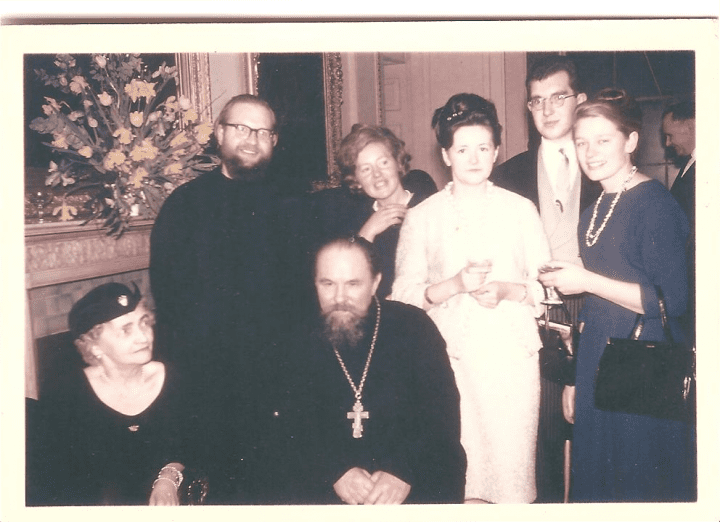

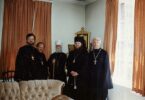
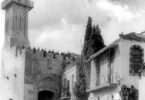

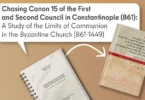

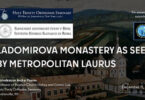
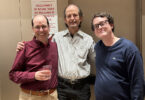

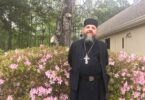
Thank you so much, John, for sharing your memories with us. You too have been a long-standing
and faithful English witness to the Holy Orthodox Faith.
Dear Mr Harwood, I was very interested to read your article on the Russian Orthodox Church Abroad and was indeed one of those children taught Russian at the Convent of the Annunciation in the 60’s and 70’s. I remember Father George Cheremetieff very well and ofcourse Abbesses Elizabeth and Seraphima with whom I and my family were very close. Princess Marina Galitzine was my classmate and her father Prince Dimitri gave me away at my first wedding at the Cathedral of the Dormition before it’s closure in 1989. I was just a child throughout the time you are writing about so I cannot talk with absolute conviction when I say that I would beg to differ with your assessment that the second wave of Russian emigrees were largely of peasant stock. My own family certainly were not. I think it is a largely forgotten fact that a lot of the gentry class and indeed some of the aristocracy, including my friend Prince Andrei Gagarin of St Petersburg did not emigrate with the first wave but stayed in the Motherland to fight communism from within, albeit unsuccessfully.
Lady Studeley is quite right. The post-WWII emigration was much more heterogeneous than my article implies. I should have said more about the Cossacks who came to England, for example.
For those interested there is a very interesting account of that period in Christopher Birchall’s great book “Embassy, Emigrants and Englishmen” (chapters 12 & 13).